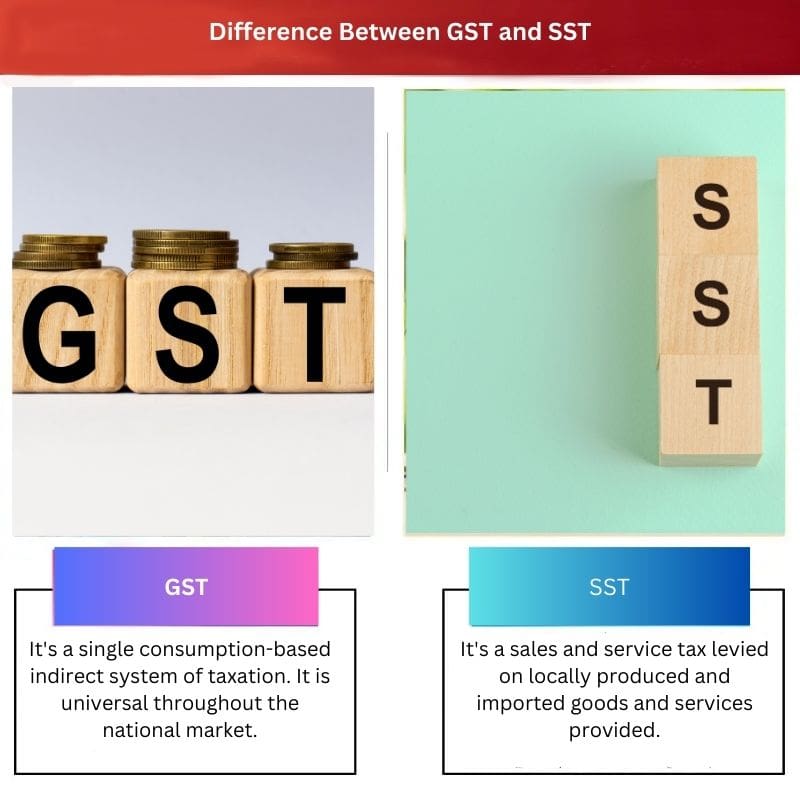GST levies a single standard tax rate for all supplies of goods and services (India is still progressing towards establishing a single speed).
Key Takeaways
- Tax systems: GST (Goods and Services Tax) is a value-added tax applied at each stage of the production process, while SST (Sales and Services Tax) is a single-stage tax imposed at the point of sale or on specific services.
- Transparency: GST is more transparent, with clear tax input and output mechanisms, while SST can result in tax cascading and hidden costs.
- Countries: GST is implemented in countries like India, Australia, and Canada, while SST is used in countries like Malaysia.
GST vs SST
GST and SST differ because GST is a unified and indirect tax levied on the supply of goods and services. SST is a service tax imposed on any taxable service carried out by a taxable individual and a sales tax charged at the manufacturer or consumer levels once only.

Comparison Table
| Parameter of comparison | GST | SST |
|---|---|---|
| Definition | It’s a single consumption-based indirect system of taxation. It is universal throughout the national market. | It’s a sales and service tax levied on locally produced and imported goods and services provided. |
| Tax base | Large tax base with a national market. | Narrow tax base with a local market. |
| Method of taxation | It is levied at multiple stages to increase transparency. | Its imposed only at the output or sales stage. |
| Cascading and compounding effect | Eliminated | Exists |
| Exports | Exports are zero-rated and are eligible to claim input tax. | Due to differential tax rates and cascading effects, there is no complete relief for exports. |
What is GST?
GST is a unified and indirect system of taxation. It is levied on the supply of goods and services like sales of goods, transfer, store, lease, exchange, or disposal of goods and services.
GST is a multi-stage tax system for which input tax credit is available. The input tax credit is highly beneficial for businesses. GST is a consumption-based tax, and its advantages are many.
The GST rate in Canada is 5%, but some states also charge a state GST called the provincial state tax (PST). The PST ranges from between 7% and 10%.
Before the GST, all countries followed SST varyingly. There existed several Central and State taxes. These included Central excise duty, cesses, surcharges, service tax, etc.

What is SST?
The sales tax is imposed on the manufacturing sector, while the service tax is set on the selected services sector. Sales Tax is only imposed once on the manufacturer when sales are made to retail traders.
Sales tax is of various types. A sales tax is imposed on the manufacturer if the buyer is the end consumer. If not, usually, there exist several intermediaries and sales to businesses that later resell the goods and are not charged a tax.
Other types of sales tax include Manufacturers’ sales tax, Wholesale sales tax, Retail sales tax, excise duty, VAT, octroi, etc.
Sales taxes are deemed to be regressive. The rate of sales tax remains the same for all classes of society. It does not change with income levels and hence causes a more significant burden for the poor.

Main Differences Between GST and SST
- GST is more transparent, while SST keeps the consumers in the dark about transfer pricing and vertical integration.
- Evidence shows that sales tax productivity has decreased over the years while that of GST has increased.



